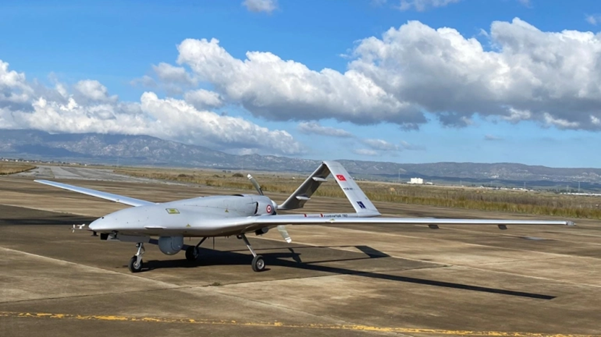
The country that leads in artificial intelligence (AI) development ‘will be the ruler of the world’. Those are the words of Vladimir Putin. His government was indirectly involved in the recent conventional war in 2020 between Armenian and Azeri forces to control the Nagorno-Karabakh region. During this conflict, we have seen the use of drones in an unprecedented way. In addition to weaponized drones, swarm tactics are disrupting conventional warfare, and we are seeing new developments of drones being integrated with fifth and sixth-generation fighter aircraft. The common denominator between all those recent technological developments is the emergence and implementation of artificial intelligence technologies, shaping the way wars will be conducted in the future.
Artificial intelligence, or more precisely machine learning, can provide a tactical advantage on the battlefield. As demonstrated by the recent conflict between Armenia and Azerbaijan over the Nagorno-Karabakh region, weaponized drones can offer a significant advantage. Azerbaijan, supported by the Turkish military, massively deployed a fleet of Unmanned Aircraft Vehicles (UAVs) equipped with increasingly autonomous and surveillance capabilities. The deployment of those drones, such as the Turkish TB2 unmanned combat aerial vehicle (UCAV), had a substantial disruptive impact on the battlefield as the Azeri forces were able to destroy 47% of the Armenian combat vehicles and 93% of its artillery. This is a significant breakthrough in conventional warfare as low-cost drones can offer robust air power while disrupting the enemy’s air defence systems in a successful manner. The implications for the future of warfare are ‘game-changing’, according to U.K. Defense Secretary Ben Wallace.
As an extension of weaponized UAVs, drone swarms have the potential to disrupt conventional warfare as well. An AI-powered fully autonomous drone swarm would combine mass, firepower, and speed, which could overwhelm the enemy’s defensive systems through coordinated and synchronized attacks. The potential use of swarm tactics has generated some anxiety among top western defence officials. General John M. Murray, head of the United States Army Futures Command (AFC), has expressed his concern that humans may not adequately be able to address the challenges posed by emerging drone swarm threats. General Murray posits that, ultimately, an AI engine would better be equipped than a human to counter swarm attacks as a human would not be able to keep up.
Furthermore, AI-enabled unmanned underwater vehicle (UUV) swarm systems are also being tested to track and potentially damage submarines, forcing them to lose their stealth characteristics vital for their survival and strategic nuclear deterrence. In addition, Chinese UUV swarms could potentially take out an entire aircraft carrier group in the near future, as argued by Franz-Stefan Gady in a hypothetical scenario published in the International Institute for Strategic Studies’ 2021 Regional Security Assessment.
Machine learning could also revolutionize warfare by integrating military manned and unmanned systems. The most common example of this application is from the Loyal Wingman project, such as the Kratos XQ-58A. Dubbed as Skyborg, the U.S. Air Force is working on an AI application that will allow the autonomous operation of drones. In line with the 2018 United States Air Force (USAF) Artificial Intelligence Strategy, the Skyborg program aims to integrate this system into various unmanned platforms. The program will allow them to operate alongside fourth and fifth-generation fighter aircraft like the Boeing F-15EX or the Lockheed Martin F-35, and to enable them to take on missions too risky for human pilots. The immediate benefit of an AI-enabled system is the increase in speed of decision-making, to improve aerial combat maneuvers and weapons employment by creating a virtual ‘co-pilot.’ The program received a positive boost with the first successful flight in April 2021, moving the USAF one step closer to fielding an uncrewed ‘loyal wingman’ for human pilots.
The U.S. is not the only country working on such an AI-enabled system to enhance its air force capabilities: the Okhotnik-B, the Russian equivalent of wingman, is an upcoming sixth-generation heavy stealth drone that will fly alongside the fifth-generation fighter Su-57. Fully autonomous, the Okhotnik-B would be able to track multiple targets while flying alongside the Su-57.
However, not all those new technological developments are widely adopted yet. Within NATO, there is a reluctance to deploy such AI systems due to a lack of trust. Giving complete control of a weapon system to an AI-enabled machine raises several moral and ethical questions with tremendous political ramifications within NATO countries like France and Germany. For now, the future of AI-enabled systems in NATO countries is likely to be confined to improve logistic systems and perform predictive maintenance operations.
Countries with less ethical constraints are currently increasing their capability in AI driven UAV systems. Lagging in terms of capability in that domain, NATO countries may find themselves at a disadvantage against traditional and emerging threats such as Russia and China. NATO needs to assess what those technological advancements in Artificial Intelligence mean for warfare and develop a realistic and strategic approach to incorporate them into existing military systems.
The data explosion and the emergence of new AI-powered systems are likely to change how wars are conducted in the 21st century, as illustrated by the Nagorno war and recent technological developments.



